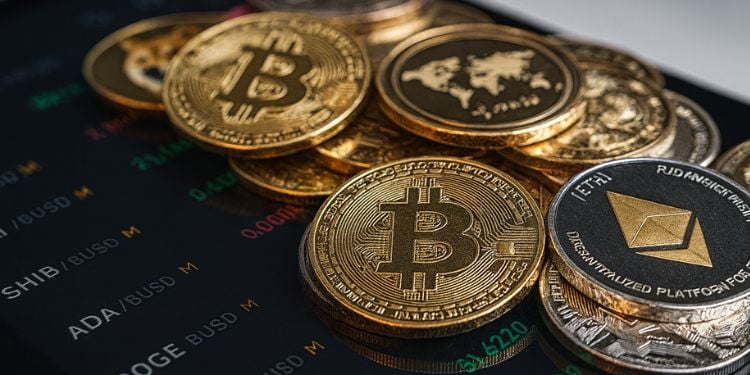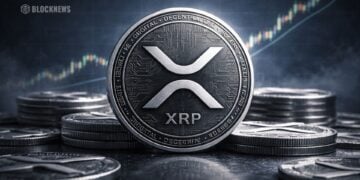- Real-world assets (RWAs) like real estate, bonds, equities, and commodities are being tokenized on blockchains, enabling faster settlement, 24/7 trading, fractional ownership, and improved transparency, with major players like BlackRock, JPMorgan, and HSBC already launching products and pilots.
- Analysts estimate up to $30 trillion in tokenization-ready assets, with forecasts projecting growth from $2 billion today to as much as $16 trillion by 2030, potentially driving one of the largest institutional capital inflows in crypto history.
- RWAs offer a regulated and familiar bridge for traditional finance into blockchain, creating a self-reinforcing cycle of liquidity, efficiency, and adoption that could reshape global markets and push total crypto market cap toward $10 trillion.
There’s a quiet but massive transformation brewing in the crypto space — and it has nothing to do with memecoins or Layer 2 hype cycles. This is bigger. Much bigger. We’re talking about real-world assets, or RWAs, finally moving on-chain. And when we say “big,” we mean trillions-with-a-T big.
Think about it — the last time crypto saw an adoption wave this potentially huge was the DeFi Summer of 2020. But this time, the money won’t just be coming from retail traders chasing yield. It’ll be coming from the institutions. From governments. From major banks and the world’s largest asset managers. And they’re not just talking about it — the infrastructure is already being built.
What Exactly Are RWAs — And Why They Matter
At its core, an RWA is just what it sounds like: a traditional asset — real estate, government bonds, corporate debt, equities, gold, commodities — represented as a token on the blockchain. Instead of ownership records living in a dusty filing cabinet or a broker’s closed database, it’s a verifiable, tradeable token you can hold in your crypto wallet.
This is a big deal because it strips out so much inefficiency. Tokenized assets can settle in seconds, operate 24/7, and are transparent to anyone who wants to verify them. We’re already seeing this play out with tokenized U.S. treasuries from players like Ondo Finance, Franklin Templeton, and BlackRock. In fact, BlackRock’s BUIDL fund — a tokenized U.S. Treasury product on Ethereum — is already attracting massive institutional flows.
Here’s the kicker: RWAs are also an adoption bridge. A lot of people don’t understand DeFi protocols or NFTs, but they do understand property deeds, stocks, and gold. For institutions, RWAs offer a compliant, regulated, and efficient way to put billions in capital to work on-chain. For retail, it means a wallet like MetaMask could one day hold ETH, tokenized Apple stock, and a slice of a government bond… all side by side.
The $30 Trillion Opportunity
Citi and Boston Consulting Group estimate that as much as $30 trillion in real-world assets are already “tokenization ready.” That includes U.S. treasuries, equities, real estate portfolios, and even private credit markets.
And we’re not talking about some far-off, theoretical milestone. Big names like JPMorgan, HSBC, and BlackRock are already in the game, running pilots, issuing tokenized products, and onboarding clients. JPMorgan’s Onyx platform, for example, is actively experimenting with on-chain settlement for institutional-grade assets.
The appeal is obvious — tokenized assets can be traded anytime, anywhere, fractionally owned, and transferred without expensive intermediaries. That kind of efficiency isn’t just attractive; it’s inevitable. Once a hedge fund or bank sees they can cut costs and move faster, there’s no reason to stick with the old systems.
From $2 Billion Today to $16 Trillion by 2030
Right now, the total value of tokenized RWAs sits at roughly $2 billion — tiny compared to the broader crypto market and a drop in the bucket compared to global finance. But by 2030, multiple forecasts project that number could balloon to $16 trillion.
That would make RWA adoption one of the largest capital shifts into blockchain infrastructure in history. Even a fraction of that would fundamentally change the market structure of crypto. It’s the kind of growth that could push total crypto market cap toward $10 trillion — not just because of speculation, but because of massive, steady capital inflows from institutions.
Larry Fink, CEO of BlackRock, has openly called tokenization “the next generation for markets.” Citi went even further, labeling RWAs “the killer use case for blockchain.” When you have Wall Street’s biggest names saying it’s inevitable, you know it’s not just hype.
Why RWAs Could Be the Next Big Crypto Narrative
There’s a compounding loop at play here: as more institutional money flows into tokenized assets, liquidity improves. Better liquidity means smoother trading, tighter spreads, and better user experiences. That, in turn, attracts more capital. The cycle feeds itself.
And unlike many past crypto narratives, this one doesn’t depend on convincing retail investors to FOMO in. It’s driven by efficiency, cost savings, and global accessibility — three things that traditional finance can’t ignore. Whether you’re a pension fund in Europe or a retail investor in Southeast Asia, the infrastructure to own and trade tokenized assets will eventually be right there in your wallet.
The Bottom Line
If you thought DeFi Summer was explosive, the RWA wave could dwarf it. We’re not just talking about meme coin pumps or temporary hype cycles. We’re talking about a fundamental re-architecture of how global assets are issued, owned, and traded.
Institutions are gearing up, governments are experimenting, and blockchain-native projects are building the bridges to make it all seamless. Your crypto wallet could soon be the single dashboard for your entire financial life — ETH, stocks, bonds, real estate, you name it.
The smart money is already positioning for this shift. If even a slice of that $30 trillion moves on-chain, the biggest winners will be the ones who saw it coming early.














